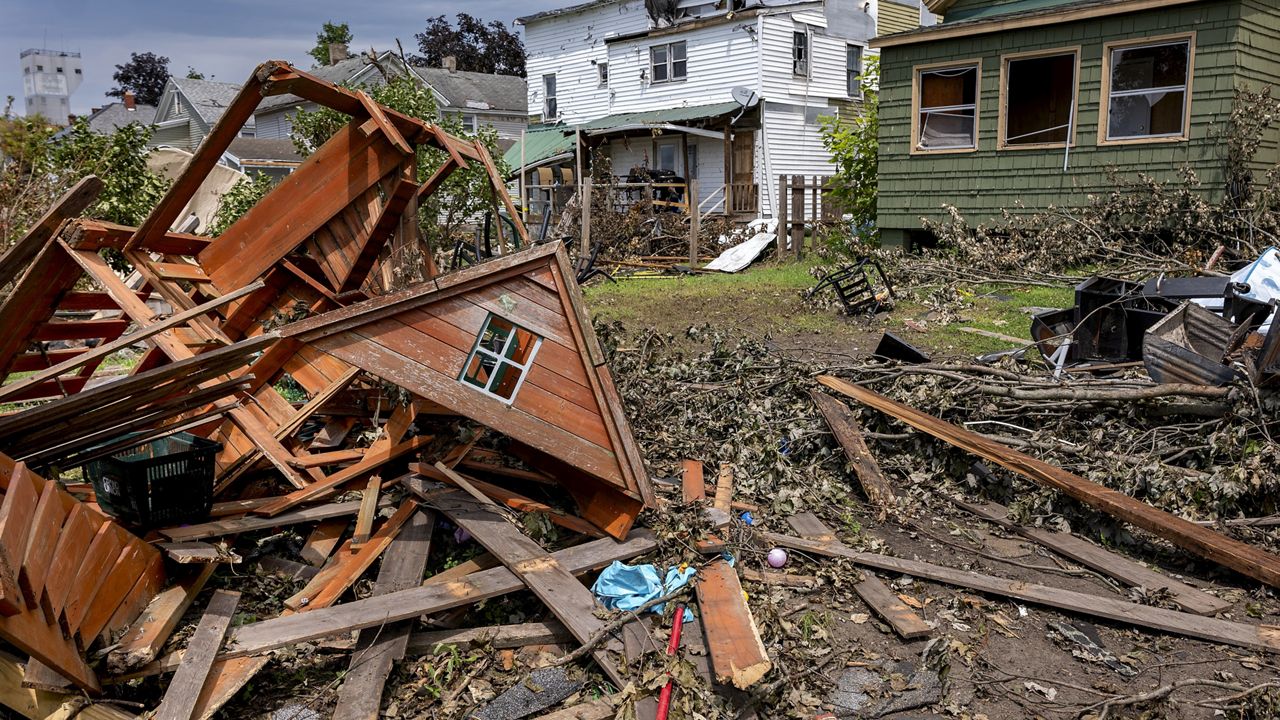The frequency of severe weather events in New York state is growing, meaning disaster response costs have risen over the last three decades or so, according to a new report released Tuesday by state Comptroller Tom DiNapoli’s office.
The report said since 1998, federal assistance to New York for declared disasters and emergencies has averaged $958.6 million in aid annually. While actual annual amounts are variable based on the severity of weather events, the aid provided captures only a portion of the full cost of the damages.
The comptroller’s report found that
Weather-related disasters that cause $1 billion or more in damage have occurred at an increasing rate since 1980
Certain types of events, including thunderstorm-related damaging wind and flash flooding, are also increasing
Since 1998 there have been an average of 2.5 weather events per year in New York that resulted in federal disaster or emergency declarations with authorized annual assistance averaging $958.6 million
There have been 594 deaths in the state due to severe weather between 1996 and 2024. Heat and extreme heat events caused the most deaths (122), followed by rip currents (62), and flash flooding (57)
According to data from the National Oceanic and Atmospheric Administration (NOAA), severe weather events have increased over time between the years of 1996 and 2024, with three out of the four years with the highest numbers of severe weather events occurring in 2019 (2,498), 2021 (2,395) and 2024. The most common of those events were:
Winds associated with thunderstorms (14,824)
Hail (4,315)
Flash floods (3,985)
Winter weather (3,817)
Winter storms (3,714)
These five types accounted for 63.1% of all events over that time period. In particular, fash floods and thunderstorm wind events have trended upwards since 1996, the report finds. The first, second and sixth-largest numbers of annual flash flooding occured in the last four years, and the seven years with the largest number of thunderstorm wind events happened in the last eight years.
Location-wise, Suffolk County, on Long Island, experienced the highest number of severe weather events during that period, followed by Saratoga, Herkimer, Ulster, Albany, Dutchess, Columbia, Rensselaer, Oneida and Washington counties.
Damage figures from NOAA show the most property damage in New York has been attributed to flash flooding ($2.5 billion), flooding ($1.2 billion), thunderstorm wind ($294 million), and high wind ($228 million).
DiNapoli said help is coming as a result of the $4 billion Clean Water, Clean Air and Green Jobs Bond Act, which New York voters approved of in 2022. It allocates funding that can help municipalities upgrade infrastructure to address severe weather impacts of climate change, or move buildings and infrastructure out of high-risk flood zones. It includes $1.1 billion for restoration and flood risk reduction projects.
“Extreme weather events are happening more and more often and inflicting financial and emotional stress on New Yorkers from loss of life to property destruction,” DiNapoli said in a statement. “From flooded subway tunnels and roadways to destroyed and damaged homes, the consequences are dire and growing. Fortunately, New Yorkers approved the Clean Water, Clean Air and Green Jobs Environmental Bond Act, which will help pay for resilience investments, but the state cannot shoulder the whole cost burden itself. The federal government cannot abandon the states in preparing for and responding to disasters.”
DiNapoli recommends the state partner with local communities on projects and redouble its efforts to assist municipalities in planning and developing cost-effective initiatives to mitigate extreme weather and to facilitate communities’ ability to access resilience funding in the bond act. In addition, the state should also provide oversight so projects are completed in a timely and affordable way, DiNapoli said.
